Stone towns of Hvar (1): Fortica – the protector of the town of Hvar for centuries
I’m coming to the island of Hvar for the fourth time if I don’t count sailing on the nearby Pakleni Islands.
I remember Hvar well, I remember one special summer vacation in a small bay near Zastražišće where there was no one, only deckchairs on the beach covered with bamboo reeds and the sound of the waves crashing against the surrounding rocks all night. It is ideal for boomers no longer interested in crowds and night outs.

Hvar city, Photo: Adria.fun
When I set off, due to Saturday’s traffic jams on the roads, I was almost late for the monstrous Zadar ferry, which connects Split to Stari Grad on Hvar. I was tired of that slow and tense ride in the queue and the uncertainty of whether I would arrive on time, so the usual pleasure of the ferry ride, due to the amount of accumulated stress, was limited this time.
Already on the second day, I was fully revived because I planned to visit the first stone fortress of the island of Hvar, the magical Fortica, which has been standing defiantly and proudly for centuries on an elevation of about a hundred meters above the town of Hvar.
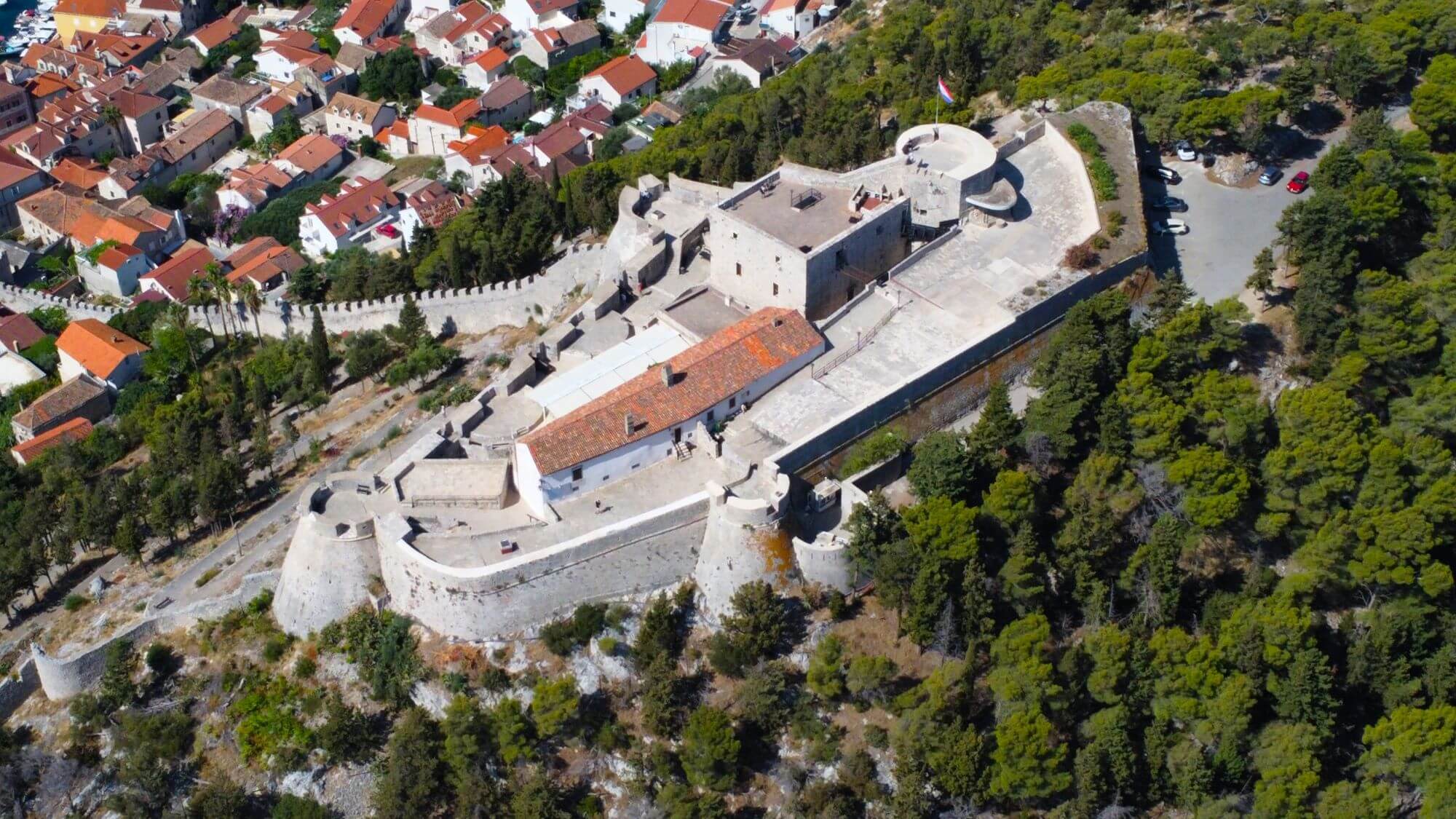
Fort Fortica in Hvar, Photo: Adria fun
The name Fortica comes from the Italian word fortezza which means fortress. The people of Hvar traditionally call it that, but the fort is also known as Španjola. Apparently, it got its name because, during the 14th century, Spanish military engineers worked on the fortress.
As the weather was hellishly hot during the days of my stay, I decided not to walk to it from the city center, but to go around by car to the front of the fortress itself. The thick walls and the shade of the surrounding trees immediately caught my attention, so I feasted on the view of them while thinking that the parking lot was not too crowded.
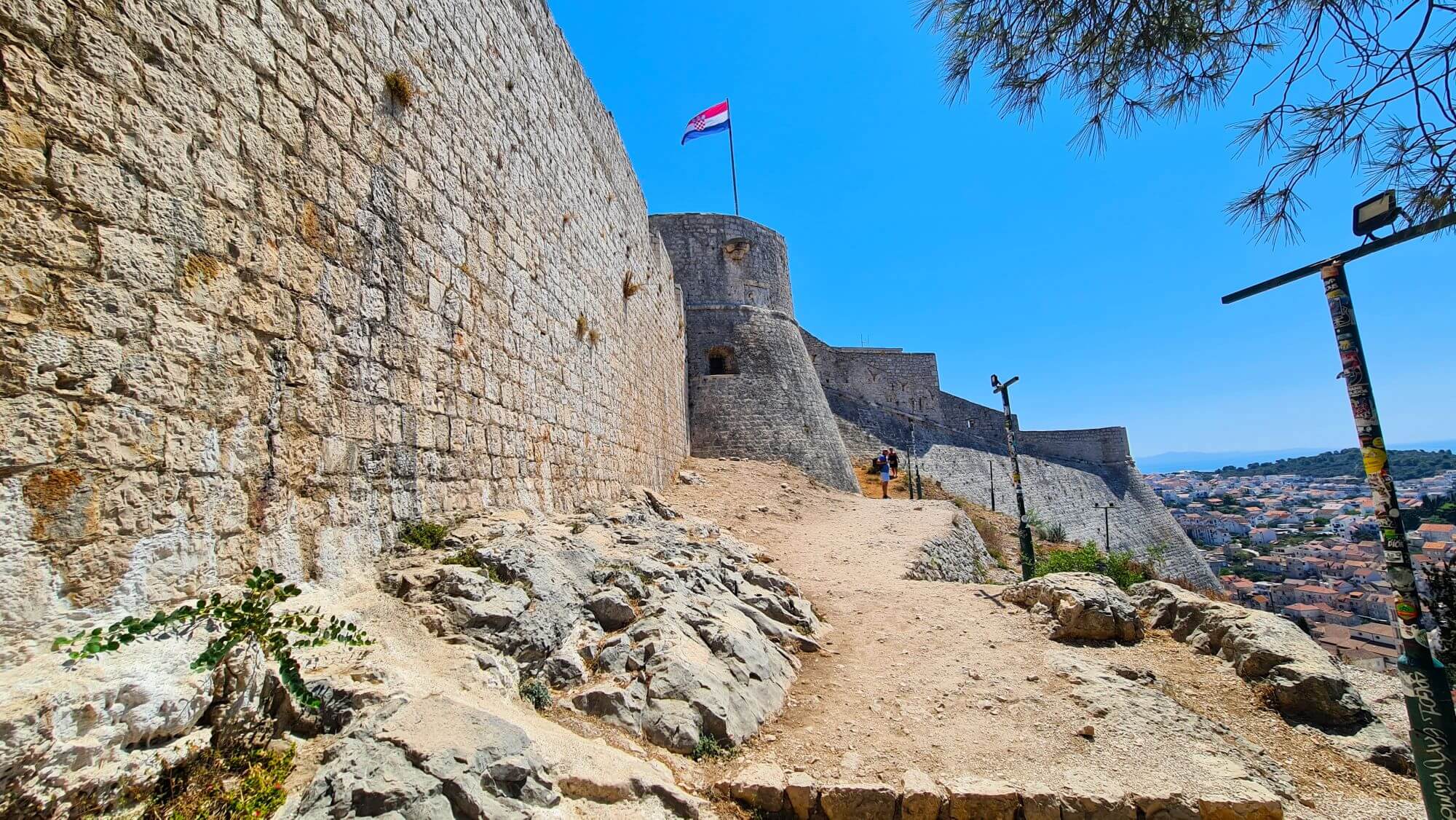
Fortica in Hvar, Photo: Adria fun
Tickets worth 10 euros per person can be purchased at the entrance to Fortica. There were also those who, seeing the price list, just turned away, I guess that cost was beyond their plan or budget. I’m still here on assignment, so the cost was planned.
Fortica with the city walls was once the central defense fort of the city of Hvar, which for centuries protected the city and the port from various invaders. Its foundations lie on an ancient defensive fortification from the first half of the first millennium BC, which protected a small Illyrian settlement on the hillside.
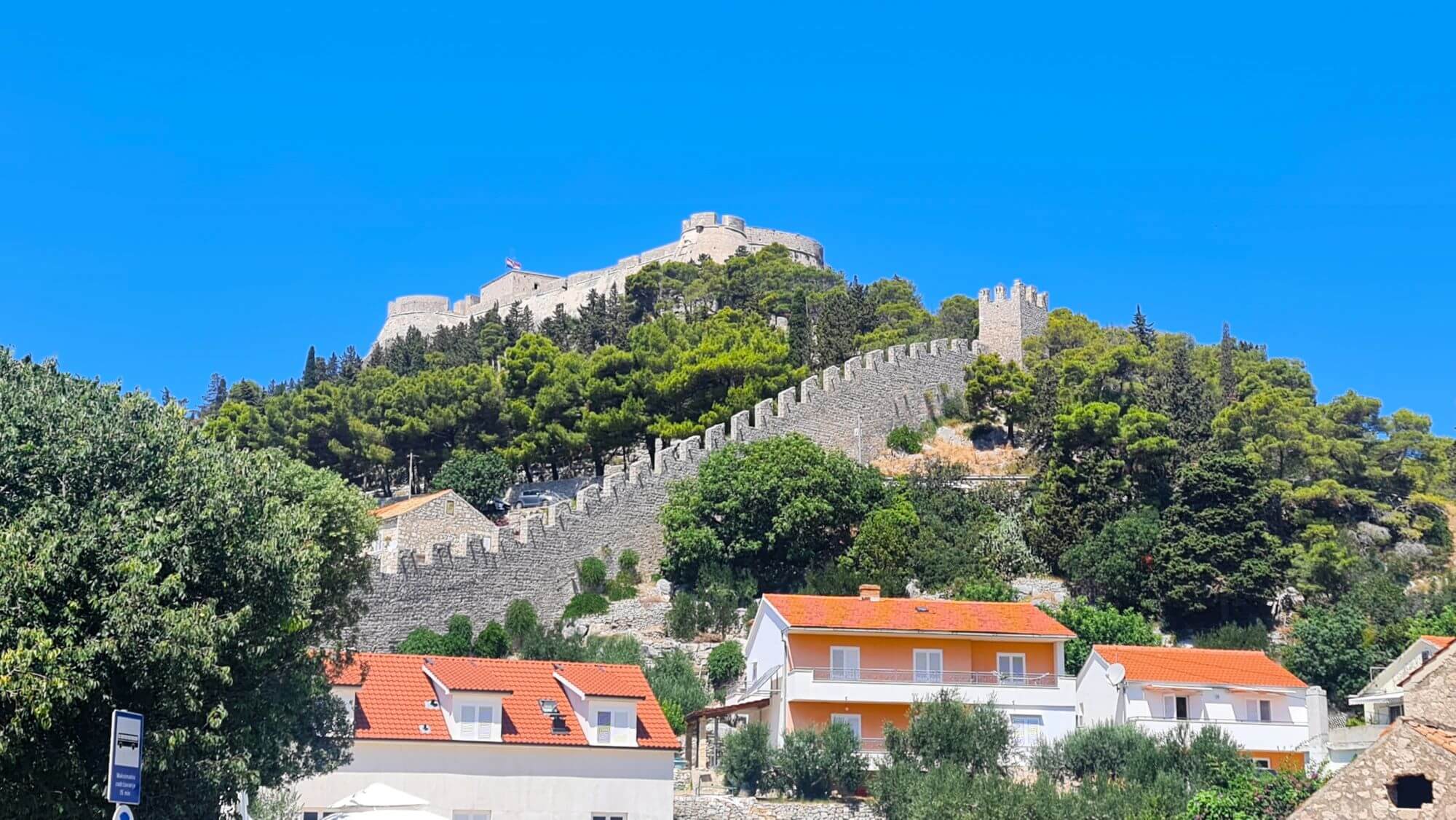
View of Fortica and defensive walls from the town of Hvar, Photo: Adria fun
The beginning of today’s fort was determined in 1282 when the Venetian government, under which the municipality of Hvar at the time was located, issued an order for its construction.
The construction was slow and by the time you say stone, several centuries passed until it was finished.
In old records, it is stated that it was completed in 1551, just before the powerful Turkish galleys arrived at the port of Hvar. Thus, the recently completed fortress saved the inhabitants of Hvar who took refuge in it, while the Turks thoroughly looted and set fire to everything outside the fortress.

Fortica, Hvar, Photo: Adria fun
Walking around the fort, I imagine that situation and the fear of the local regiment, who were left without everything, but at least their heads remained on their shoulders.
I meet other tourists on the walls of the Fortica, and according to the languages they speak, I conclude that they are Poles, Germans, English, and Czechs, and there are also our languages from Vardar to Triglav.
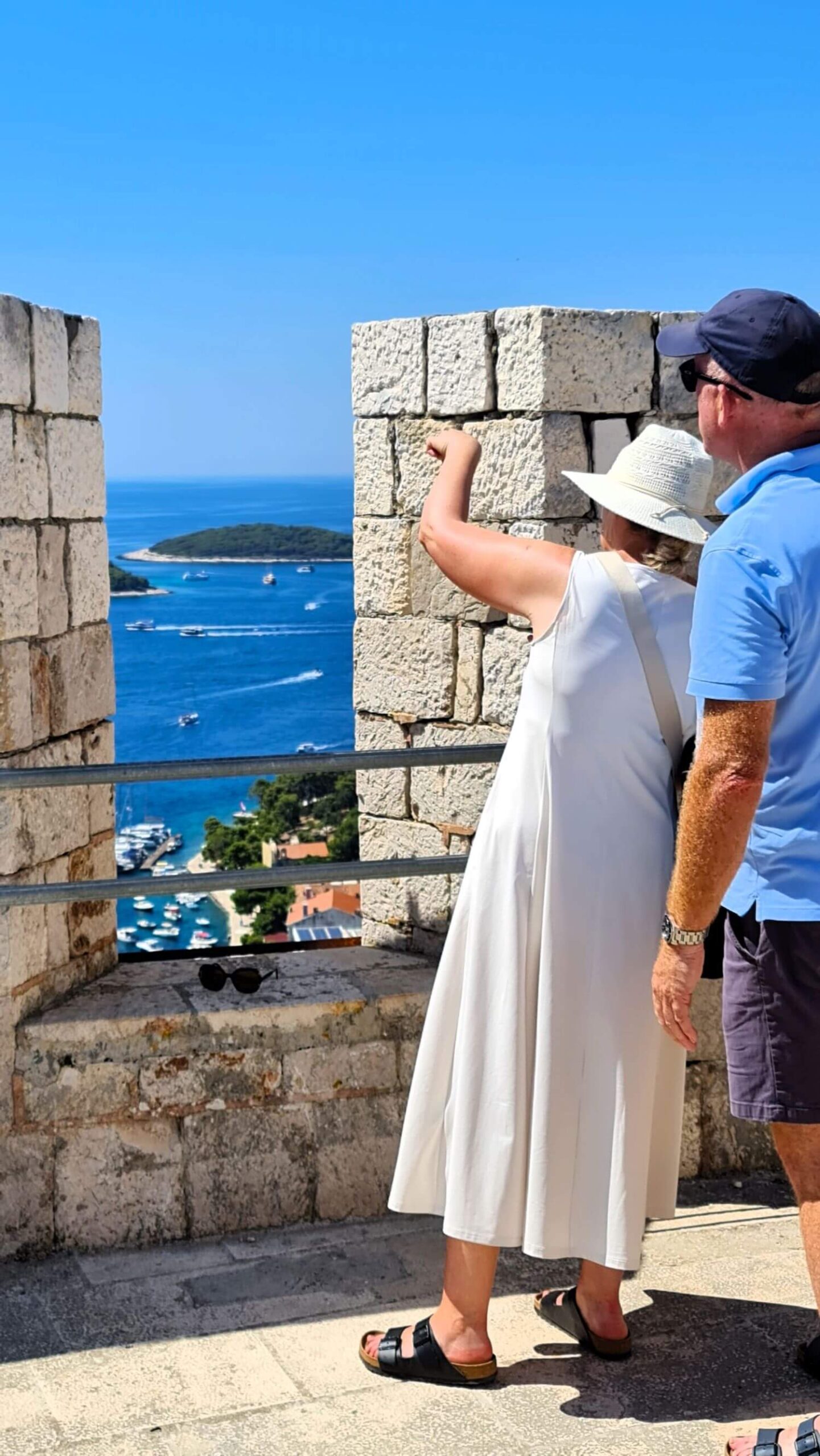
Tourists investigating Fortica, Photo: Adria fun
In the following centuries, Fortica was upgraded and repaired, but also changed owners, so at the beginning of the 19th century, during the Austrian rule, a new barracks and powder room were built.
I did not come across any information on when this prison for disobedients was built, but I must admit that the temperature was more comfortable in them compared to the red-hot stone of the towers and defensive walls.
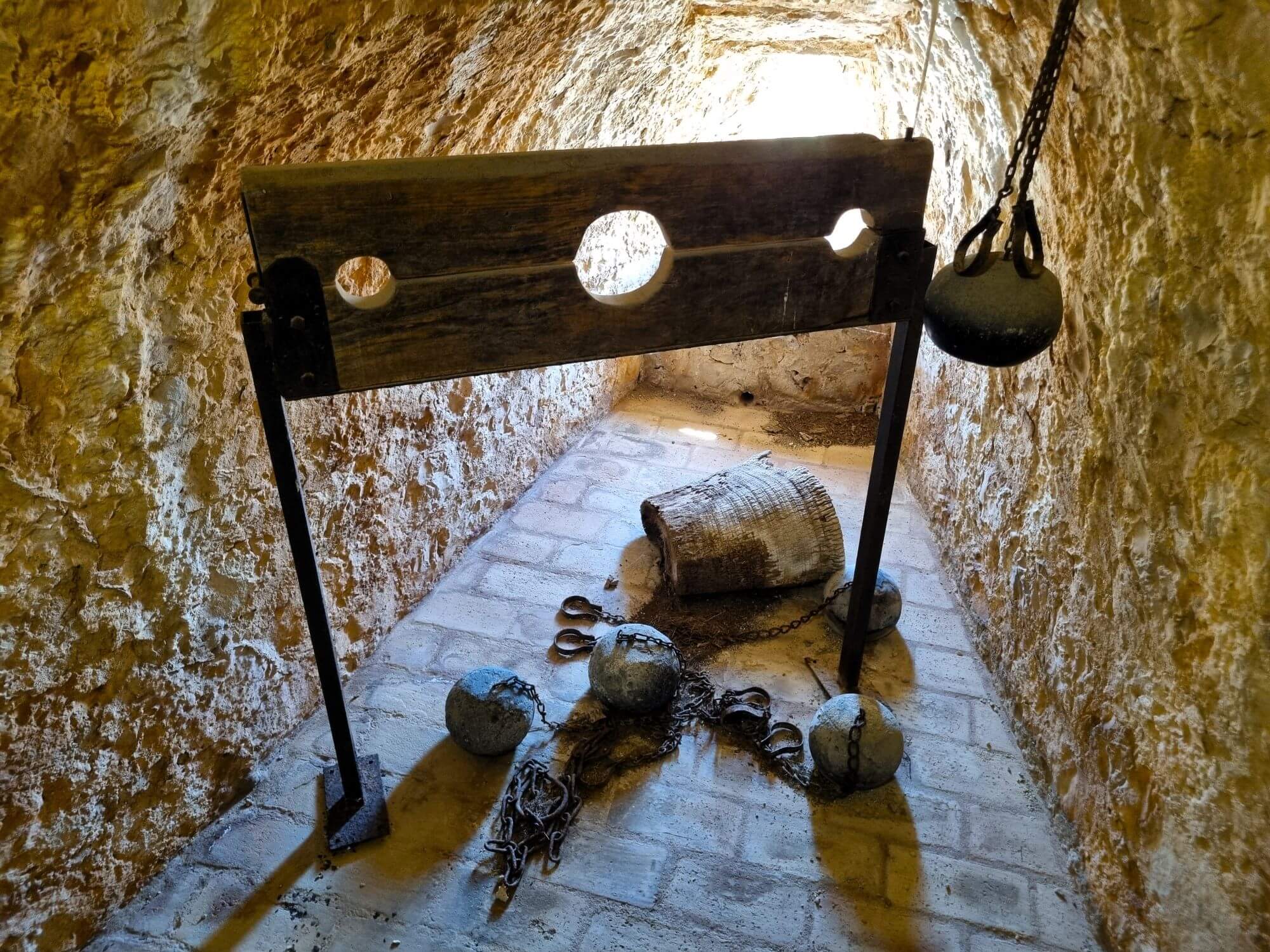
Fortica prison, Photo: Adria fun
After the departure of Austria, Fortica was abandoned and neglected, so the legend says that at night “fairies danced their round” on it, but that also changed later, so today this fortress is a lure for tourists looking for rich history.
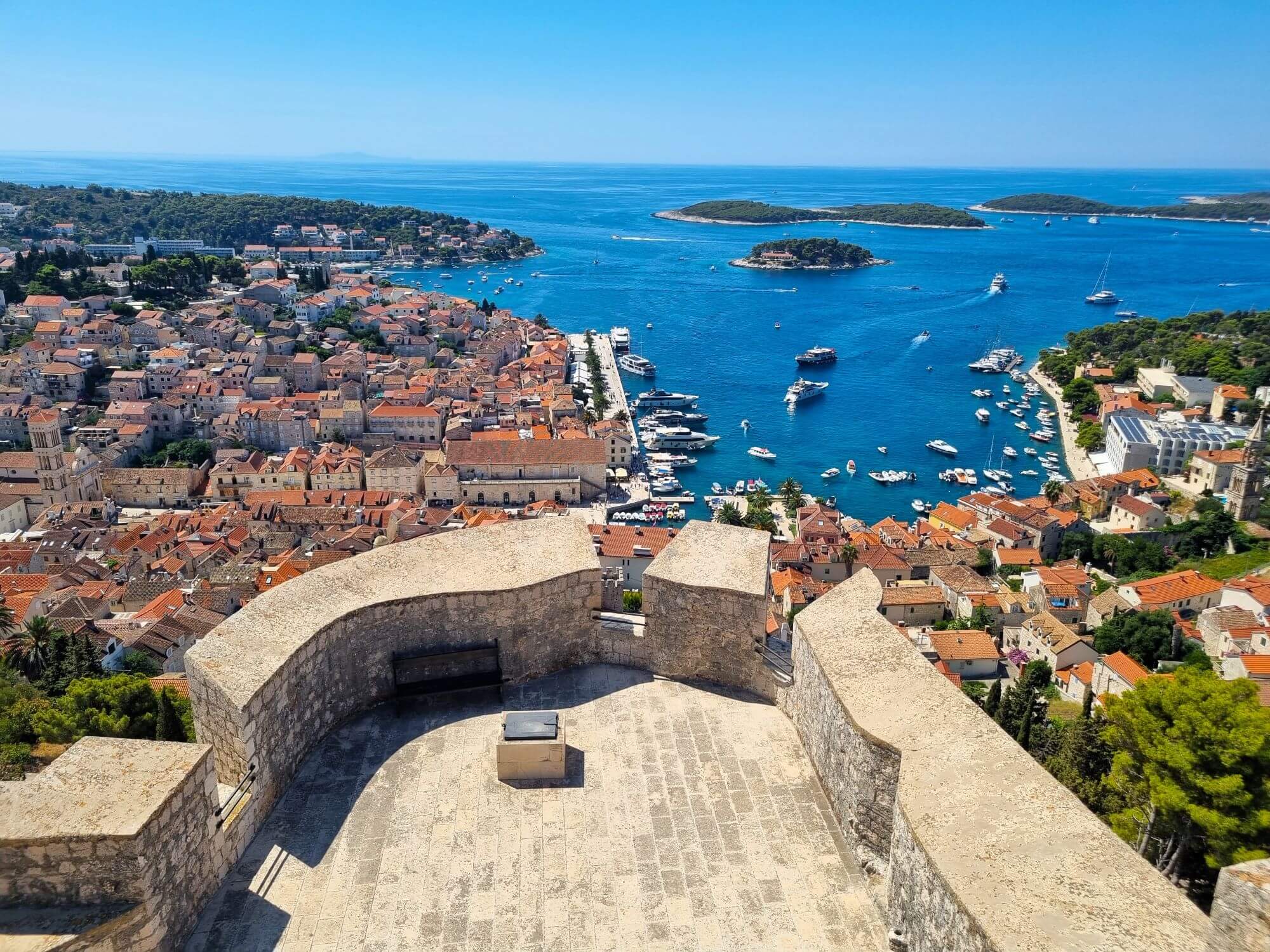
View of Hvar city from the Fort, Photo: Adria fun
The view from the fortress to the town of Hvar is unforgettable, so you’ll quickly get over the 10 euros at the entrance, I was especially impressed by the old ruddy cannons that used to shoot at the barbarians who wanted this piece of our paradise by force.
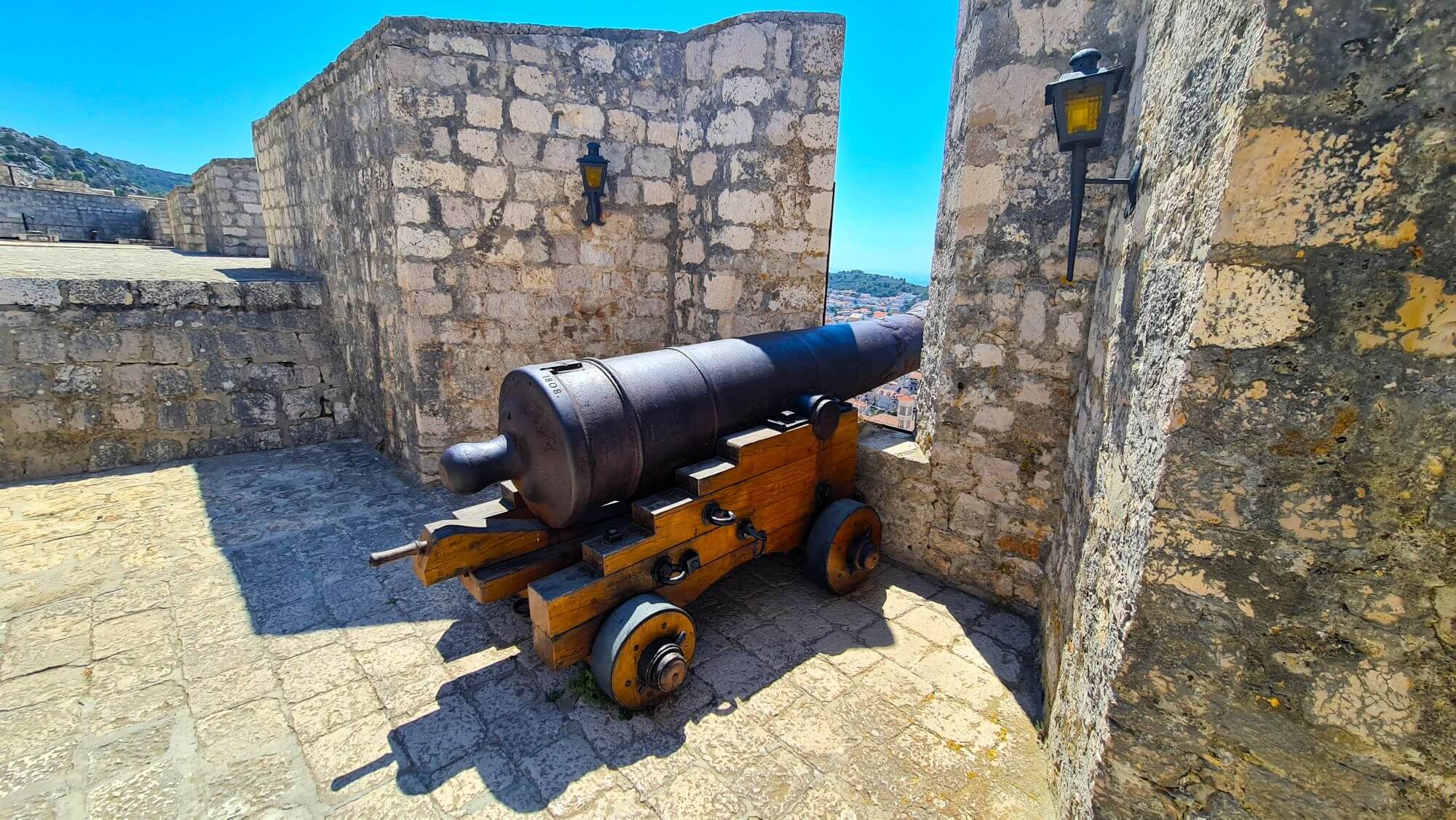
Cannon, Photo: Adria.fun
Inside the fortress is a beautiful collection of amphorae found in nearby locations on Palagruža, Lastovo, and Hvar, which is worth a visit.
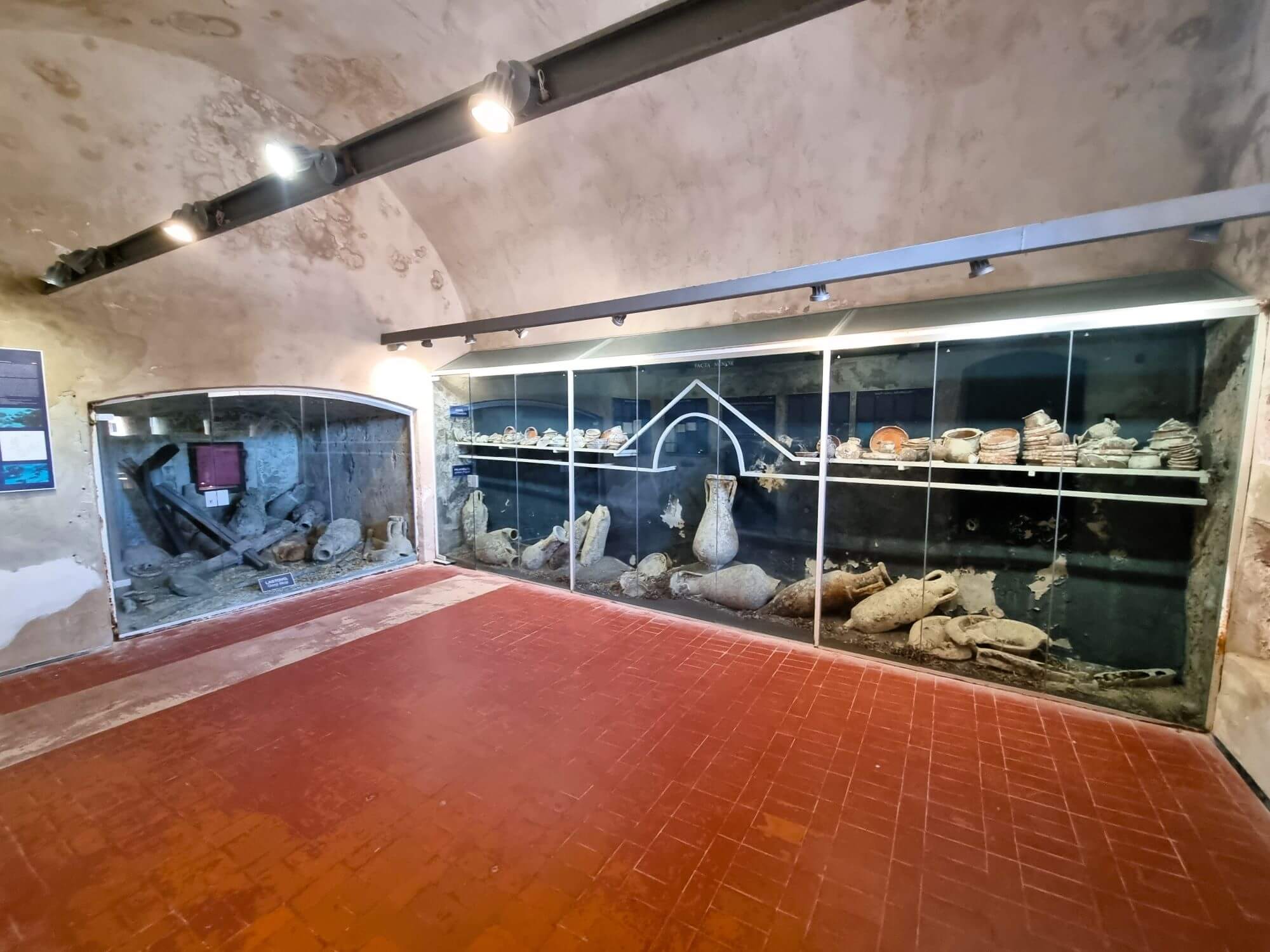
Amphora collection, Photo: Adria fun
Within the fort, there is also a restaurant with popular prices for coffee at 2 euros, juices at 4, and beer at 5 euros, so whoever wishes feel free to do so.
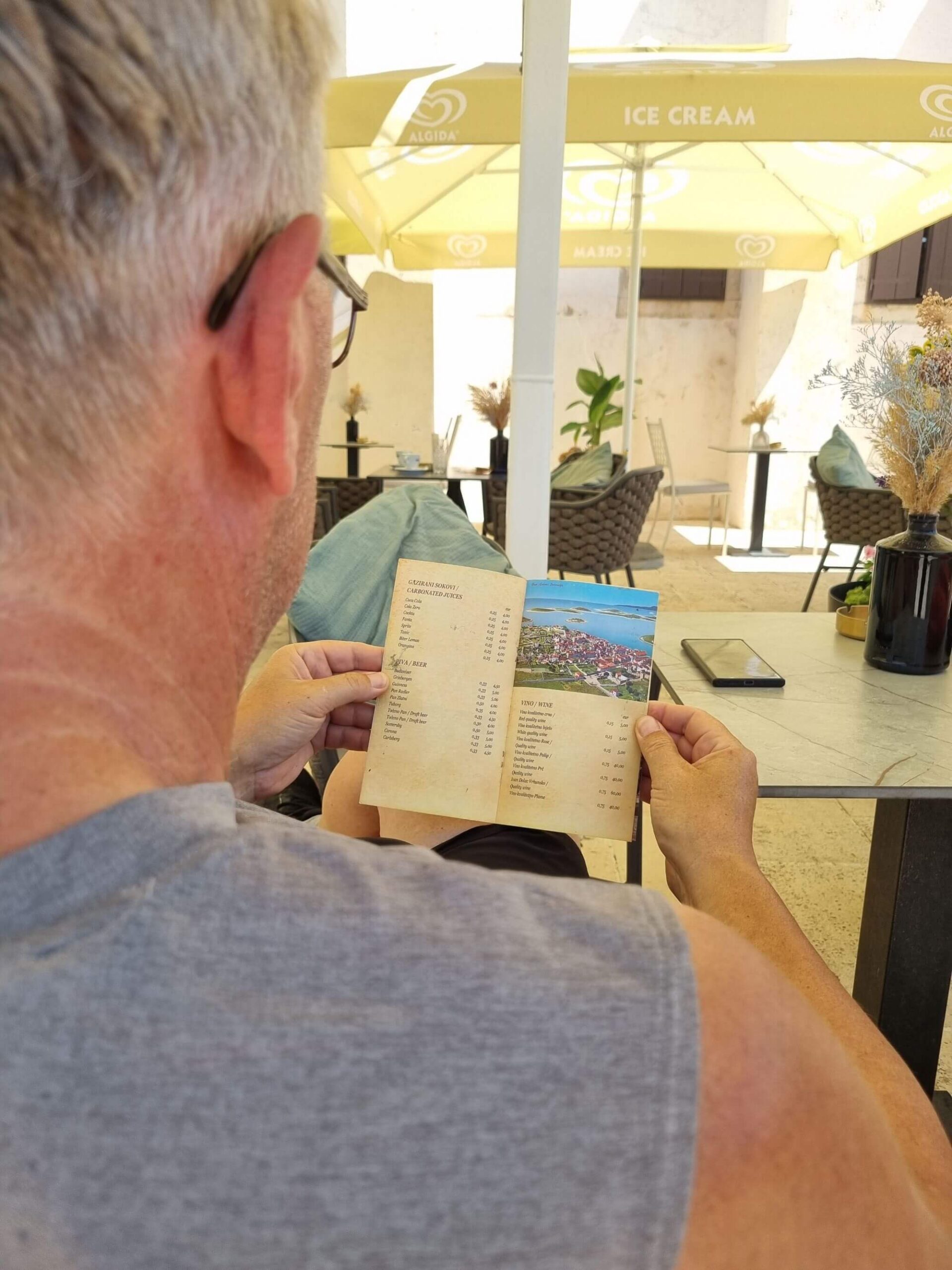
Fortica cafe, Photo: Adria fun
While I am writing this travelogue, I am still under the impression of those past times that passed through this article in the blink of an eye, even though it was centuries ago.
What if I could go to the future and see what everything will look like in another thousand years… Maybe, if I’m born again… Who knows…
This publication was co-financed by the Fund for the Promotion of Pluralism and Diversity of Electronic Media.

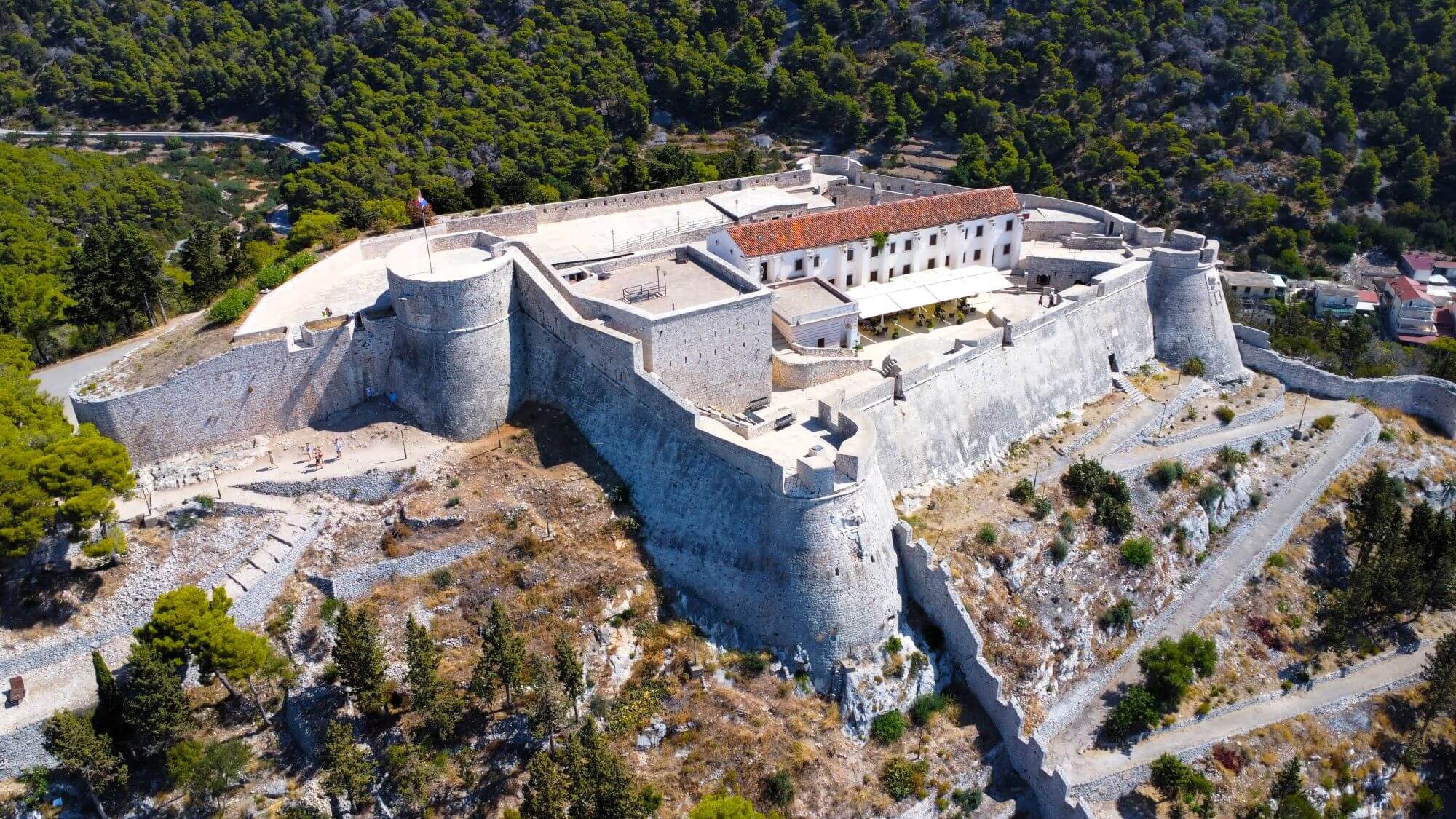
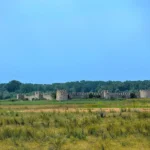
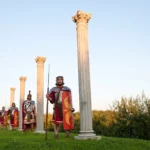
Leave a Reply